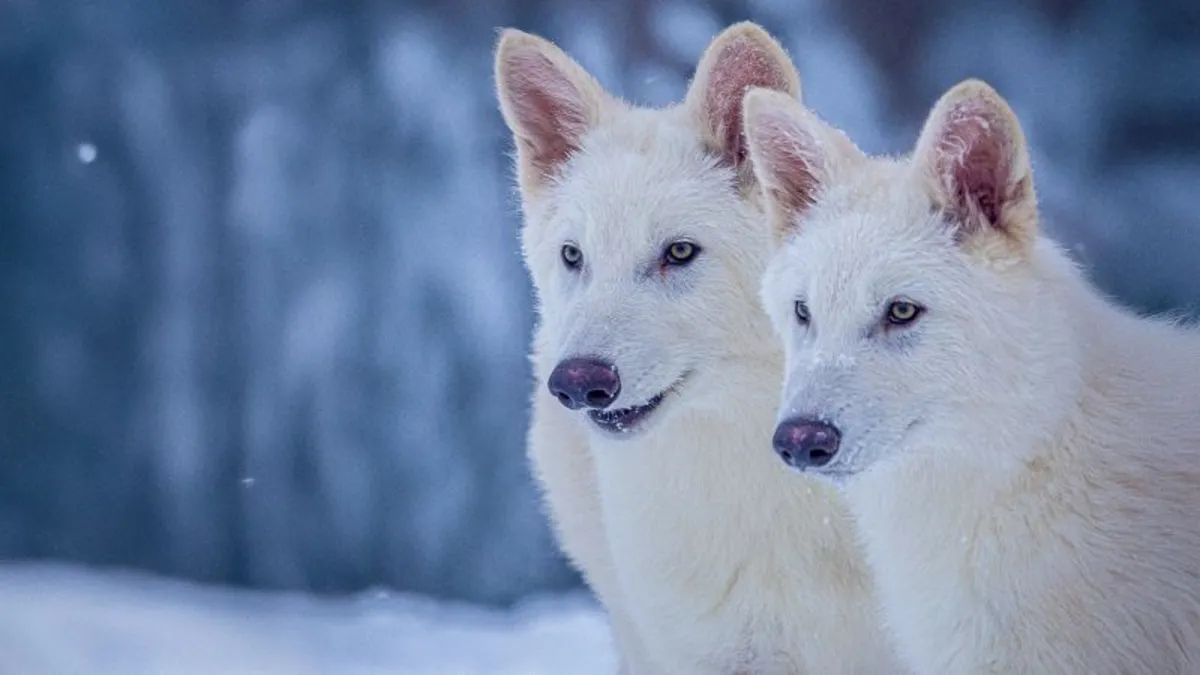
In a groundbreaking announcement, Colossal Biosciences, a Dallas-based biotech firm, has successfully resurrected a species of wolf that went extinct approximately 12,500 years ago. This remarkable feat marks the dire wolf as the "world's first successfully de-extincted animal." The company has utilized advanced techniques, including ancient DNA, cloning, and gene editing, to create three dire wolf pups, showcasing the potential of modern biotechnology in reversing extinction.
The dire wolf, known scientifically as Aenocyon dirus, was a formidable predator that once roamed across North America. It served as the inspiration for the terrifying canines depicted in HBO's hit series, Game of Thrones. Colossal's scientists achieved this milestone by modifying the genes of the gray wolf, the closest existing relative to the dire wolf. The new pups exhibit a hybrid appearance that closely resembles their extinct ancestors.
According to Colossal, dire wolves were larger than their gray counterparts, featuring a wider head, thick light fur, and a stronger jaw. This genetic revival aims to restore the dire wolf's traits, effectively bringing this ancient predator back to life.
Ben Lamm, co-founder and CEO of Colossal, expressed his enthusiasm, stating, "This massive milestone is the first of many coming examples demonstrating that our end-to-end de-extinction technology stack works." The company sourced DNA from a 13,000-year-old tooth and a 72,000-year-old skull, leading to the birth of these healthy dire wolf puppies.
The three dire wolf pups are currently residing in a 2,000-acre facility, which is surrounded by 10-foot-tall "zoo-grade" fencing. This site is under constant surveillance, utilizing security personnel, drones, and live camera feeds to ensure their safety. The facility has received certification from the American Humane Society and is registered with the US Department of Agriculture.
Using ancient DNA extracted from dire wolf fossils, Colossal's scientists were able to construct two high-quality genomes of Aenocyon dirus. By comparing these genomes with those of modern canids like wolves, jackals, and foxes, they identified genetic variants associated with dire wolf traits, such as their distinctive white coats and thick fur.
The team then executed 20 edits across 14 genes in gray wolf cells, ultimately cloning the most viable cell lines and transferring them into donor eggs. This intricate process led to the birth of the first de-extinct species, with three successful pregnancies utilizing domestic dogs—specifically large, mixed-breed hounds—as surrogates.
Colossal's innovative approach involved creating a hybrid genome through CRISPR technology, which allowed them to replace certain gray wolf gene variants with those characteristic of dire wolves. Love Dalén, a professor in evolutionary genomics and an adviser to Colossal, noted that while the new pups are 99.9% gray wolf genetically, they possess traits that closely align with the dire wolf phenotype, making this development particularly exciting.
Since its founding in September 2021, Colossal has raised over $435 million and is also working on reviving other extinct species, such as the mammoth and the dodo bird. Despite criticism regarding the ethical implications of de-extinction, Colossal aims to ensure animal welfare and has implemented rigorous precautions to avoid any unintended genetic consequences. Critics worry that significant resources could be better allocated elsewhere, especially given current challenges in maintaining healthy populations of existing wildlife.
Christopher Preston, a professor of environmental philosophy, pointed out that while Colossal seems to be addressing animal welfare concerns, it remains uncertain how dire wolves would fit into modern ecosystems. With ongoing challenges in managing existing wolf populations, the role of these newly created creatures in the wild raises important questions about the future of de-extinction and its ecological impact.
Colossal's successful creation of dire wolf pups is a significant step forward in the field of de-extinction, blending cutting-edge science with ancient history. As we continue to explore the possibilities of bringing back lost species, the implications for biodiversity and conservation are profound.